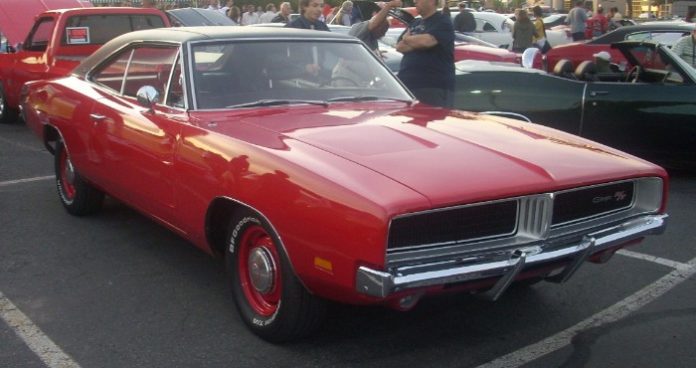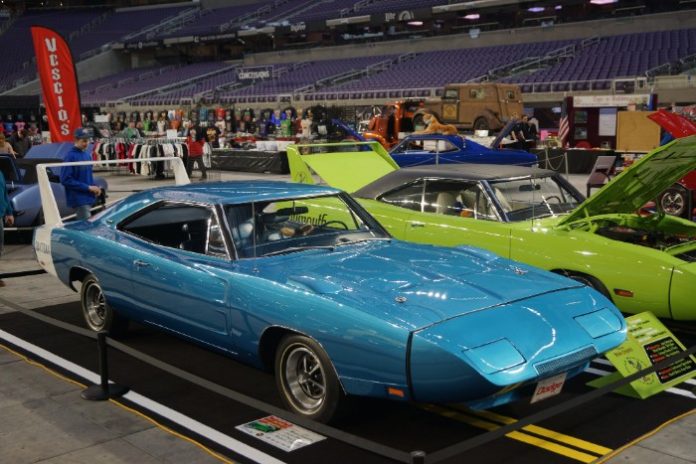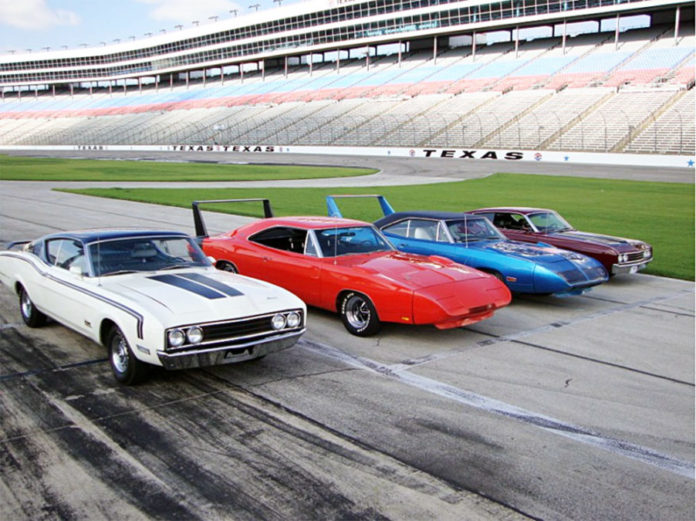Younger automobile fanatics may find it hard to believe, but back in the day NASCAR – the National Association for Stock Car Auto Racing – would only admit 100% production cars on the track. Any vehicle or engine which was not mass produced and available for sale to the general public was banned from racing.
Win on Sunday, Sell on Monday
NASCAR wins were the ultimate marketing tool for manufacturers. In their quest for dominance in the late 1960s, Ford and Chrysler started a head to head competition to design the ultimate NASCAR vehicle.
As engine development began producing diminishing returns, designers turned their focus on aerodynamics. This would later go down in history as the “Aero Wars” of 1969 and 1970.

Although it bears an evergreen style, the 1968 Dodge Charger had a few fatal flaws that caused it to give way to Ford’s Torino Talladega and Mercury Cyclone Spoiler II. With its deeply recessed front grille and tunneled rear window, the Charger could simply not accelerate past 175 mph – aerodynamics being the limiting factor.

To fix this, Dodge issued the Charger 500, which had its grille and rear window flush with the body of the car. This showed significant improvement, but not enough to dominate over Ford’s vehicles, which already had major advancements in aerodynamics.
Chrysler’s Winged Warriors

Determined to settle the rivalry once and for all, Chrysler charged Creative Industries with designing the ultimate aerodynamic car.
This gave birth to two of the most iconic vehicles we recognize today: the 1969 Dodge Charger Daytona and 1970 Plymouth Superbird. With their pointy noses and ridiculous rear spoilers, these two cars are forever etched into the history of NASCAR and American muscle cars as a whole.
The vehicles were so aerodynamic they achieved a drag coefficient of 0.28, which was unheard of at the time. This allowed Buddy Baker to drive his Dodge Charger Daytona past the 200 mph barrier in 1970 – a world first at NASCAR.

However, this achievement was also the demise of the aero cars. Speeds vastly exceeded tire and safety technology. In 1970, Talmadge “Tab” Prince was racing in a Dodge Charger Daytona. During the second 125 mile qualifying race of the Daytona 500, his engine failed and threw him into a slide. Oil on the ground caused a crash with Bill Seifert, which killed Prince on the spot.

The Aero War ended as quickly as it started
The following year, 1971, growing safety concerns forced NASCAR to limit the engines in winged cars to 305 cubic inches or 5.0 liters. This took away any aerodynamic advantage they had.

So, after two brief years, the Aero Wars ended. Although taking many records home, Chrysler’s “Winged Warriors” failed to win decisively against Ford in the overall NASCAR seasons.
The Dodge Charger Daytona won two races in 1969 and four more in 1970. The Plymouth Superbird won eight races in 1970.
In comparison, the Ford Torino Talladega won 29 races in 1969 and 1970. The Mercury Cyclone Spoiler II won a total of eight races.

This is part one of our NASCAR Aero Wars series. Parts two and three coming soon.
-
- Part 1 – History Of The NASCAR Aero Wars 1969 – 1970
- Part 2 – The Undying Winged Warriors Of 1969 – 1970
- Part 3 – The Ultimate Winged Warrior – 1970 Superbird Custom Build
